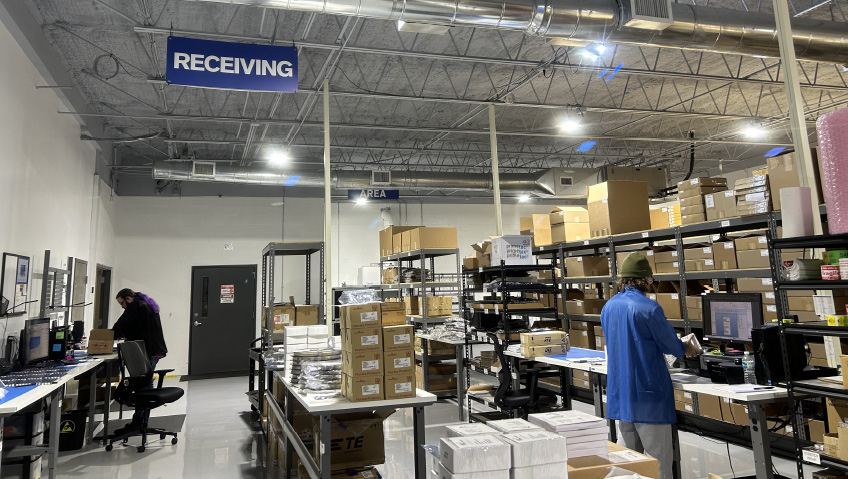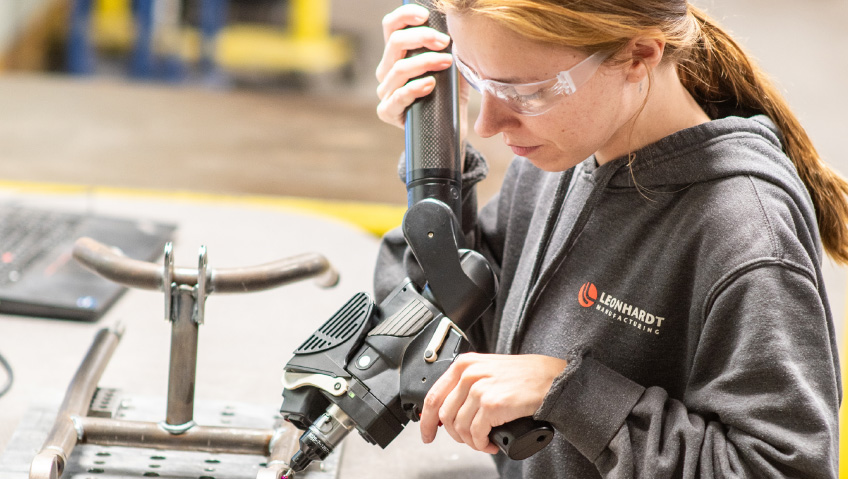Arshon Technology Inc. Founder and CEO Mazi Hosseini was struck with a groundbreaking idea while on a cruise in the Mediterranean Sea. “We had no connection whatsoever to outside of the cruise,” he remembers. The lack of cellular and Wi-Fi connectivity posed a problem when his family wanted to find one another on the sprawling ship. “I could not talk to my son or my wife. We didn’t know where we were. The cruise was significantly large. We had to find each other just by walking around.”
Hosseini has a history of creative problem-solving showcased through the next-generation technology available through his company. So, it comes as no surprise that the technology wizard was inspired to launch another product when confronted with a frustrating lack of communication while on vacation. “The idea came that if you use the LoRa communication, and somehow we harness the communication in a way that we can connect it to our smartphone, that may help us communicate in the area that the cellular and Wi-Fi is not available,” Hosseini remembers.
Invented by the company Suntech, LoRa—short for Long-Range Wireless Technology—enables long-distance transmission with low power consumption, making it a foundational component of Hosseini’s new invention. While Bluetooth can connect over distances of no more than one hundred metres or so, LoRa’s range is an astounding four kilometres in urban areas and sixteen kilometres in rural regions.
“Initially we developed it for peer-to-peer or point-to-point communication, but came up with the idea to use it for people communication when there is no network available,” Hosseini says. “Our goal, from the start, was to create a powerful and affordable communication device to help us communicate with each other in places where there is no cellular or Wi-Fi coverage.”
The result is the exciting new product Orange Fob Pro. The technology harnesses the power of LoRa, combined with the low power and accurate GPS, to send text messages or short voice messages when other means of communication are not available. The durable, waterproof Fob is easy to take anywhere; it can be worn like a wristwatch, on a lanyard around the neck, slipped into a pocket, or attached to a keychain.
“We make it as small as possible to easily be carried around,” Hosseini says. The battery lasts more than forty-eight hours, and it has wireless charging capability. If users misplace their Fob, it will signal its location, making it easy to find. Users can communicate with another Orange Fob up to ten miles away, and using multiple devices within the area will increase that distance, since messages can be passed through devices to extend the range.
Orange Fob opens a wide variety of possibilities for people in areas without reliable cellular coverage. “The only limitation is you only communicate with your peers [that have] that Fob and are in your vicinity,” he notes. The applications are endless, from rock climbing, skiing out-of-range slopes, and cruise ship travel to road trips, sailing and boating, working in remote locations, and outdoor excursions.
“For example, you go hiking or camping with family and friends and you are in an area that either there is no cellular coverage or coverage is bad,” Hosseini says. “So you can have this Fob with you and the other person, or other people can have the Fob, and as long as you have it connected to your smartphone by Bluetooth and you run the app, you can text message everyone in your group or a specific person in your group. And you can send voice messages.”
This technology can be of critical importance if group members are separated with no other way to regroup. “When you go outdoors and to remote areas, you always have a fear of what can I do if I get lost?” he says. “How I can message my friend or family?”
Orange Fob eliminates these concerns. “From time to time you hear someone in the middle of some trip is lost and nobody can find him for a certain amount of time, or someone left a group [on a] mountain trip and they could not find that person, and, unfortunately, somebody lost his or her life because of that situation but if you have the Fob, you can send the Fob into the mode of help; you send messages to another Fob.”
Not only can people communicate on the go without cellphone coverage, but they can also share their location. For instance, “sometimes you go and travel with multiple cars, and you don’t know if your friends are behind you on the road or past you already.” Typically motorists rely on cellphone communication to stay in touch. “But if there is no cellular coverage, which may happen sometimes, you get lost,” Hosseini points out. “With the Orange Fob, you can also share the location,” allowing travel companions to find one another quickly and easily, and, if travelers are lost on the road or in the wilderness, the app can load offline maps, so they never have to rely on data and cellular connectivity to find their destination.
Overseas travelers find the technology particularly convenient and cost-saving. “When traveling abroad, you need to pay excessive money for roaming and access to text messages and voice,” he explains. “Especially when you are not in your hotel, as hotels usually provide free Wi-Fi. But by using Orange Fob, you can text message to your family and friends while all travelling together. You can share locations with each other and be connected.”
Orange Fob uses a private wireless network, eliminating security concerns. “One of the other major worries we have is cyber security,” Hosseini says. “Is anyone listening to our voice messages? Or can [they] see our text messages? Anything [that] goes on Internet will be recorded on multiple clouds and telecom systems, while when you use Orange Fob, there is no possibility [of] recording or even intercepting your text or voice messages.”
This is not the case with standard cellular communication. “When you send a text message from your phone to your friend, as on the cellular network, what’s going to happen?” he asks. “The message would be saved on your phone. Second, the message would be transferred to cellular wireless, to a telecom tower. And from the telecom tower, it will be transferred to the telecom cloud. And from that telecom cloud, it goes to another telecom cloud associated with the receiver and then would be saved there. And then from there, it goes to a local tower close to your other party. And then, from that, goes to your receiver phone. So these text messages would be recorded all over the place. Even if you delete them from your phone or even if your receiver deletes them from their phone, still there is a record with times and details all over the place.”
But with Orange Fob, if you delete the message, “It’s gone forever. Nobody can track it.” This feature makes the technology popular with companies that need to keep proprietary information safe from competitors. “They have much higher security when they use this fob, rather than communicating to a typical cellular platform,” Hosseini declares. “Imagine you have a company that has a headquarters somewhere and you have a bunch of researchers and they like to communicate. It would be much safer if you use our system to communicate rather than just normal cell phones or computers. If they’re really worried about the safety and security of their data, that’s one of the possible applications of our system.”
Orange Fob also gives the option for messages to be automatically deleted immediately after being read or after a specified amount of time. Users simply choose which security setting to apply to read messages in the easy-to-use app.
How much does this must-have technology cost per month? The answer may surprise you. “When you use a typical cellular network on your phone, you have to pay depend[ing] on what kind of plan you have,” Hosseini says. “But using the Fob, you don’t need to pay anything. It’s just buy the device and use it. There is no payment.”
Arshon Technology will launch Orange Fob in the second quarter of this year. It will be sold in a pair, with the option to add additional Fobs to the order so that multiple people can stay connected—no matter where they go. Not surprisingly, pre-launch feedback is good and it seems only a matter of time before the new product makes a mark on the industry.






